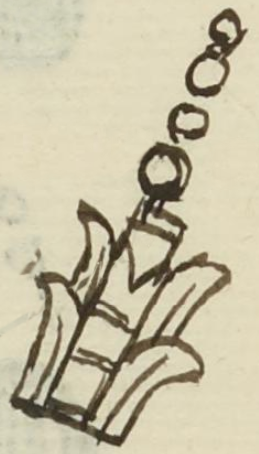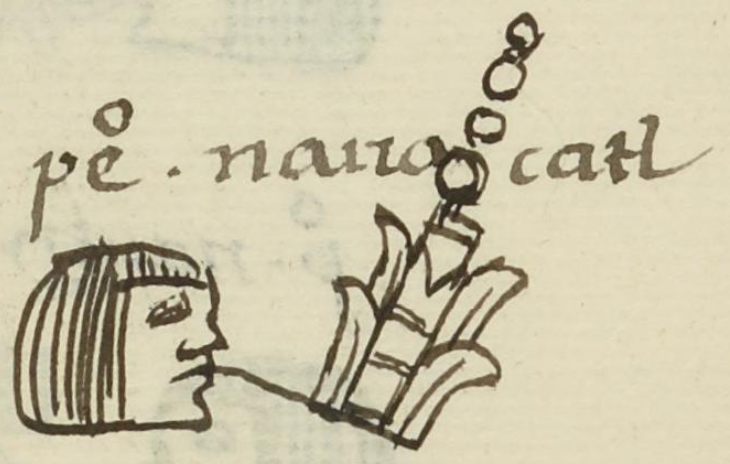Nauhacatl (MH662v)
This black-line drawing of the simplex glyph for the personal name Nauhacatl (“Four Reed” or “4-Reed”) is attested here as a man’s name. It can also be spelled Nahui Acatl. The glyph shows an early rendition of the acatl glyph–as a segmented cane with two upright leaves on each side. Above the reed is a vertical line of four small circles, each one a counter. So, this is a calendrical date, taken from the 260-day religious divinatory calendar called the tonalpohualli, which combines day names, such as acatl, with a number between 1 and 13.
Stephanie Wood
1560
Jeff Haskett-Wood
cuatro, caña, nombres de días, nombres de hombres, calendarios, religión indígena

nahui, four, https://nahuatl.wired-humanities.org/content/nahui
aca(tl), reed or cane, https://nahuatl.wired-humanities.org/content/acatl
Cuatro Caña, o 4-Caña
Stephanie Wood
Matrícula de Huexotzinco, folio 662v, World Digital Library, https://www.loc.gov/resource/gdcwdl.wdl_15282/?sp=405&st=image.
This manuscript is hosted by the Library of Congress and the World Digital Library; used here with the Creative Commons, “Attribution-NonCommercial-ShareAlike 3.0 License” (CC-BY-NC-SAq 3.0).



